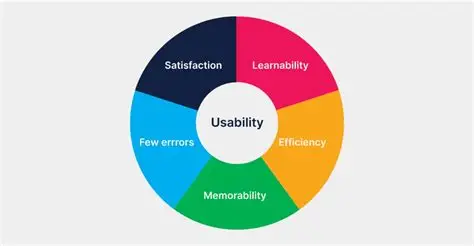Usability and Effectiveness: Do Your Products Truly Work for Your Customers?

When evaluating a product or service, one of the most important questions a customer can answer is:
“Does this product solve your problem?”
This gets to the heart of both usability (how easy something is to use) and effectiveness (how well it works). If a product is difficult to navigate or doesn’t deliver its intended result, customers won’t stay long—even if it looks good or has advanced features.
Other key questions like “How easy was it to find what you needed?” and “Is our product/service easy to use and reliable?” help businesses understand not just whether their product functions, but whether users enjoy using it.
Why Usability and Effectiveness Matter
-
Customer Satisfaction
A product that’s easy and intuitive reduces frustration, saves time, and creates positive user experiences. -
Adoption and Retention
People stick with products that solve real problems without a steep learning curve. -
Support and Cost Efficiency
The more usable your product, the fewer support tickets, training sessions, or workarounds your team has to handle. -
Competitive Advantage
In crowded markets, user experience is often what separates good from great.
Key Questions to Measure Usability and Effectiveness
Here are three high-impact feedback prompts:
-
“Does this product solve your problem?”
-
This helps you validate product-market fit.
-
It also shows whether your messaging aligns with the product’s actual value.
-
-
“How easy was it to find what you needed?”
-
This pinpoints UX/navigation issues.
-
It’s especially useful for websites, apps, or platforms with complex features.
-
-
“Is our product/service easy to use and reliable?”
-
Reveals performance, stability, and ease of use.
-
Frequent downtime or clunky interactions can quietly erode trust.
-
Collecting and Using the Data
-
Surveys: Embed short usability questions within product flows.
-
User Testing: Observe real people interacting with your product in real time.
-
Analytics: Track user behavior patterns (e.g., drop-off points, repeated actions).
-
Support Insights: Identify trends in common issues or confusion points.
Once you’ve gathered data:
-
Prioritize the most frequent or high-impact usability blockers.
-
Validate changes with small user tests before rolling out.
-
Communicate improvements back to users—this builds loyalty.
Conclusion
A beautiful product means little if it isn’t effective or usable. By directly asking users whether your product solves their problems and is easy to navigate, you gain valuable insights to refine, simplify, and ultimately create better experiences.
- Arts
- Business
- Computers
- Jocuri
- Health
- Home
- Kids and Teens
- Money
- News
- Recreation
- Reference
- Regional
- Science
- Shopping
- Society
- Sports
- Бизнес
- Деньги
- Дом
- Досуг
- Здоровье
- Игры
- Искусство
- Источники информации
- Компьютеры
- Наука
- Новости и СМИ
- Общество
- Покупки
- Спорт
- Страны и регионы
- World


